1. Line: A line is a perfectly straight figure extended for ever in both directions.
Example :![]()
represent by
2. Line segment: The shortest distance between any two point is called line segment. It has no end points.
Example :![]()
represent by
3. Ray: A line segment extended to one direction only is called a ray. It has one initial point and no definite length.
Example :![]()
represent by
4. Angle: An angle is formed when two lines or line segments meet or intersect each other.
OR
Two rays having same initial point form an angle.
Example :

Type of angles:
(i) Acute angle: An angle whose measure is more than 0° and less than 90° is called an acute angle.
Example: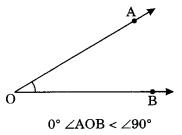
(ii) Obtuse angle: An angle whose measure is more than 90° and less than 180° is called obtuse angle.
Example:
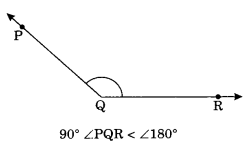
(iii) Right angle: An angle whose measure is 90° is called right angle.
Example:
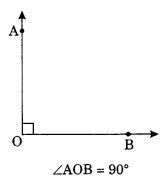
(iv) Straight angle: An angle whose measure is 180° is called straight angle.
Example:

(v) Reflex angle: An angle whose measure is more than 180° but less than 360° is called reflex angle.
Example:
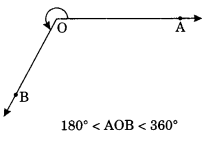
Pair of angles:
(i) Adjacent angles: Two angles having a common aim and a common vertex and non-common arms he on either side of the common arm are called adjacent angles.
Example:
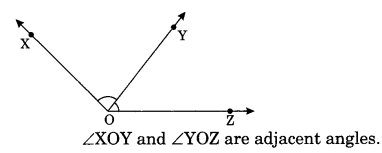
(ii) Complementary angles: Any two angles whose sum is 90° are called complementary angles.
Example:
∠AOB = 60° and ∠PQR = 300
∠AOB + ∠PQR = 60° + 30° = 90°
∴ ∠AOB and ∠PQR are complementary angles.
(iii) Supplementary angles: Any two angles whose sum is 180° are called supplementary angles.
∠AOB and ∠PQR are supplementary angles.
Example:
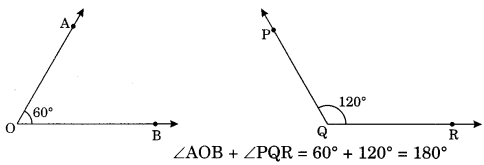
(iv) Linear pair of angles: When the sum of two adjacent angles is 180°, then they are called linear pairs.
Example:
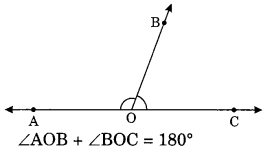
(v) Vertically opposite angles: When two lines intersect each other, they form a pair of angles opposite to each other.
Example:
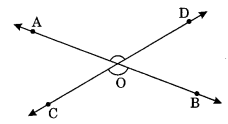
∠AOD and ∠COB) and (∠AOC and ∠BOD) are the pairs of vertically opposite angles.
Vertically opposite angles are always equal to each other, i.e., ∠AOD = ∠COB and ∠AOC = ∠BOD
Pairs of Lines:
(i) Intersecting Lines: The two lines are said to be intersecting lines if they have a common point which is known as point of intersection.
Example:

(ii) Parallel lines: Two lines are said to be parallel if they do not intersect each other even on extended in either direction.
Example:


